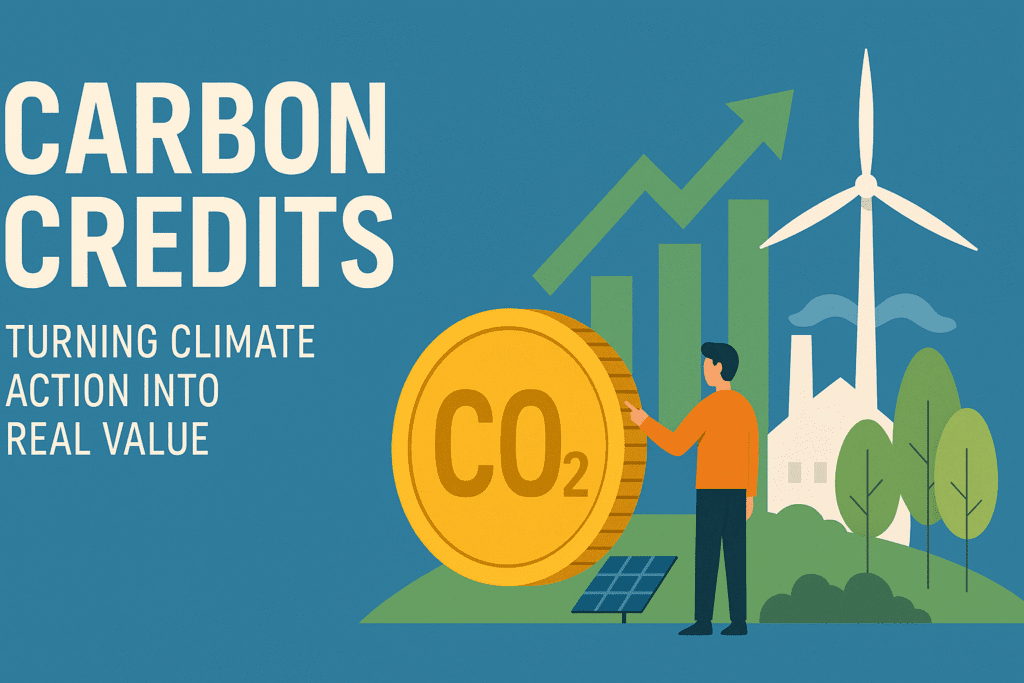In recent years, the conversation around climate change has shifted from awareness to action. Businesses, governments, and individuals are all looking for ways to reduce their environmental impact. One of the most powerful tools in this effort is the concept of carbon credits. But what exactly are they, and why are they so important?
What Are Carbon Credits?
A carbon credit represents one metric ton of carbon dioxide (or its equivalent in other greenhouse gases) that has been reduced, avoided, or removed from the atmosphere. Think of it as a certificate proving that a specific action—like planting trees, generating clean energy, or improving farming techniques—has led to measurable climate benefits.
These credits can then be purchased by companies or individuals looking to offset their own carbon emissions. For example, if a business cannot fully eliminate its greenhouse gas emissions, it can buy carbon credits from projects that are actively reducing emissions elsewhere.
How Carbon Credits Work
The carbon credit system is designed to incentivize climate-friendly projects. Here’s how it typically works:
- Project Development – An initiative, such as a reforestation program or a renewable energy project, is set up to reduce emissions.
- Verification – Independent organizations verify that the project’s climate benefits are real, measurable, and permanent.
- Issuance – Carbon credits are issued based on the verified amount of emissions reduced or removed.
- Trading – Companies or individuals purchase these credits to offset their own emissions.
This creates a market-driven approach to tackling climate change, ensuring that climate-friendly projects are financially sustainable.
Types of Carbon Credit Projects
Carbon credits can come from a wide range of activities, including:
- Forestry and Land Use: Planting mangroves, afforestation, or preventing deforestation.
- Renewable Energy: Wind, solar, and hydro projects replacing fossil fuels.
- Agriculture: Improved farming techniques, biochar production, and climate-smart practices.
- Carbon Capture: Innovative technologies that directly remove carbon dioxide from the air.
Why Carbon Credits Matter
Carbon credits bridge the gap between ambition and action. They allow companies to take responsibility for emissions they cannot yet eliminate, while also channeling money into projects that benefit both people and the planet.
For developing countries, carbon credits are particularly valuable. They provide funding for sustainable development, create jobs, and help protect natural resources. For global corporations, credits are a way to meet net-zero commitments and demonstrate climate leadership.
The Challenges Ahead
Despite their potential, carbon credits are not without criticism. Concerns include:
- Greenwashing: Companies relying on credits instead of reducing their actual emissions.
- Integrity: Ensuring projects deliver real and lasting climate benefits.
- Pricing: Volatility in the carbon market can make long-term planning difficult.
To address these, transparency, strong verification standards, and innovation are key.
The Future of Carbon Credits
As climate action accelerates, carbon markets are set to grow significantly. From local reforestation initiatives to high-tech carbon removal solutions, the diversity of projects will expand. At the same time, stronger regulations and standards are being developed to ensure integrity and accountability.
Carbon credits are not a silver bullet, but they are an important part of the global strategy to fight climate change. They turn climate-positive actions into measurable economic value, aligning sustainability with financial incentives.

